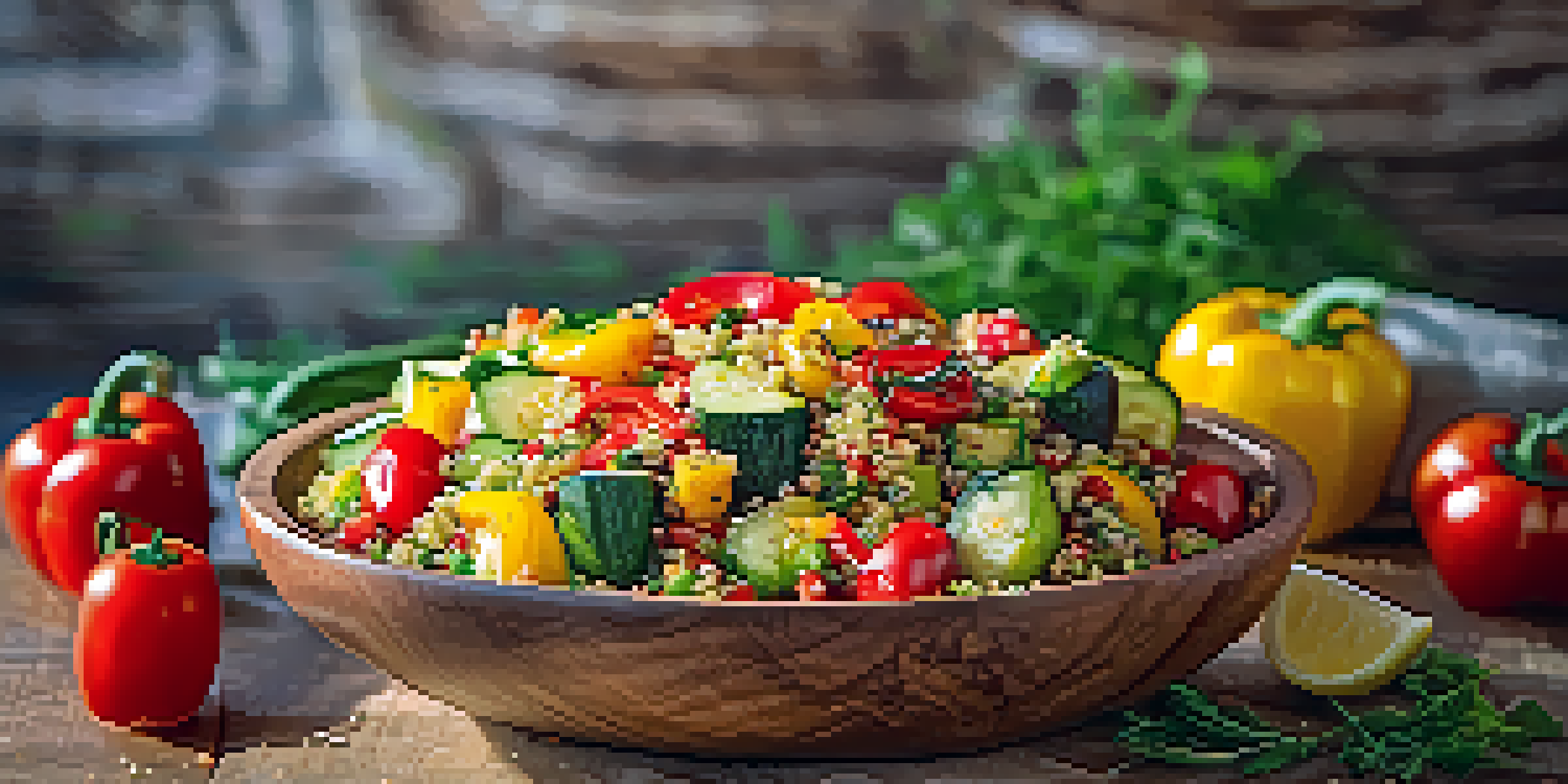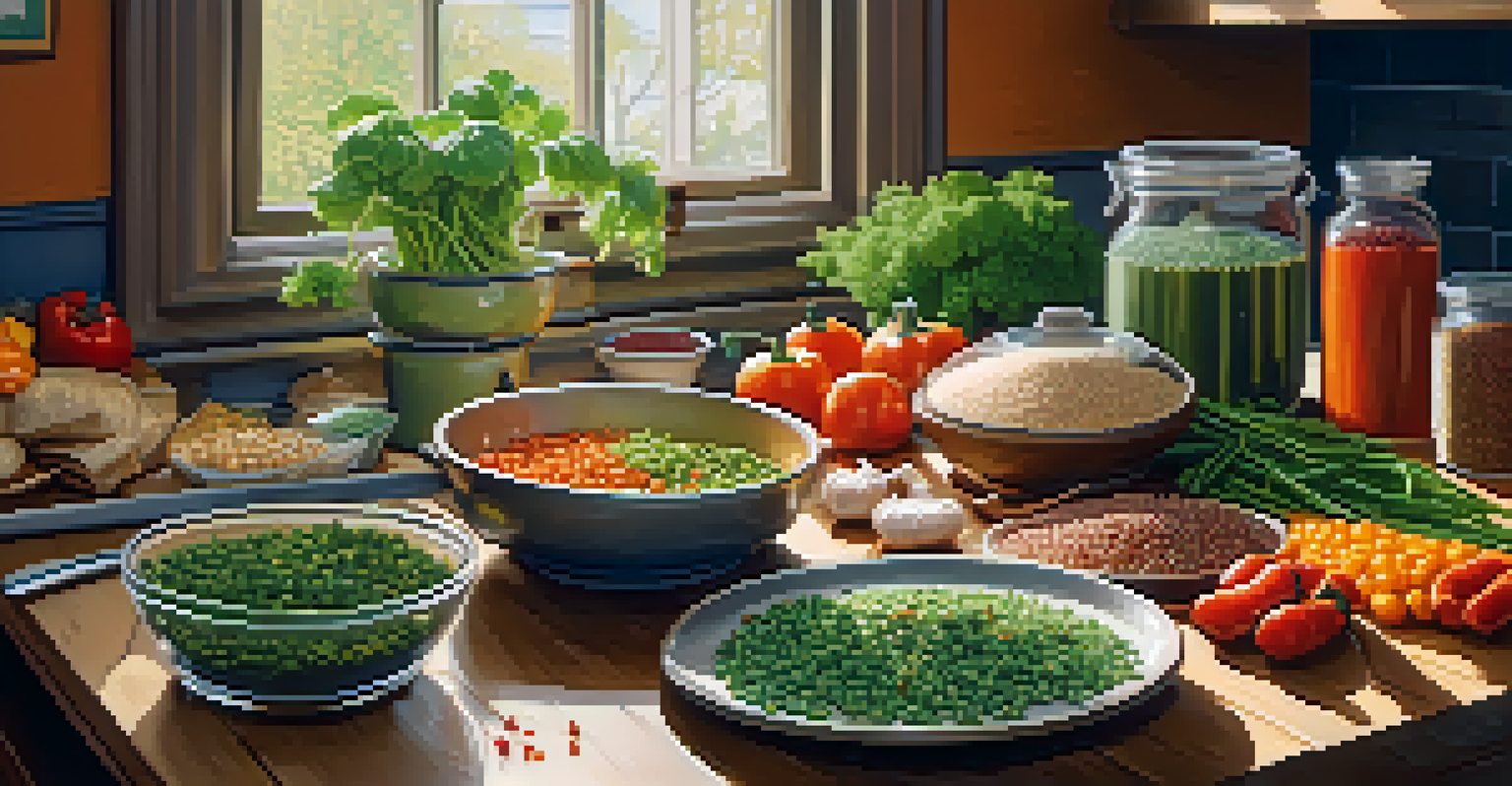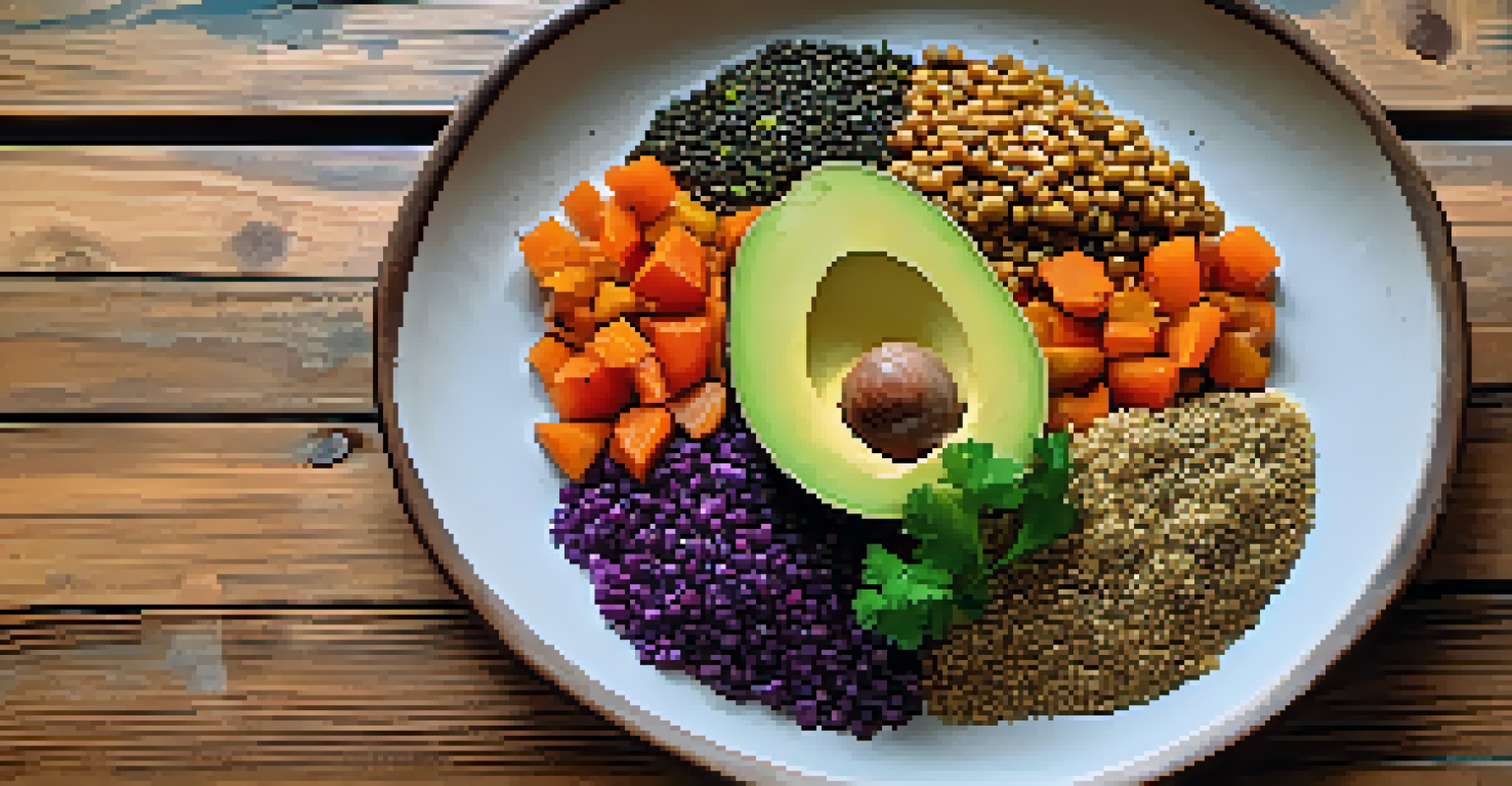Creating Delicious Vegan Meals Without Common Allergens

Understanding Common Allergens in Cooking
When preparing meals, it’s crucial to recognize common allergens such as nuts, gluten, soy, and dairy. These ingredients can trigger reactions in many individuals, making it essential to create alternatives. By understanding these allergens, we can adjust our cooking methods and ingredient choices accordingly. This knowledge empowers you to craft delicious meals that everyone can enjoy safely.
Let food be thy medicine and medicine be thy food.
For example, instead of using traditional dairy milk, you could opt for oat or coconut milk, both of which are incredibly creamy and versatile. Similarly, replacing regular flour with gluten-free options like almond or chickpea flour can open up a world of possibilities. As we learn to navigate these substitutions, we can ensure that our meals are both safe and scrumptious.
Ultimately, understanding allergens allows us to be more inclusive in our cooking. By being mindful of what goes into our dishes, we can cater to various dietary needs, making mealtime enjoyable for everyone at the table.
Essential Ingredients for Vegan Cooking
When it comes to cooking vegan meals, the right ingredients can make all the difference. Staples like legumes, grains, vegetables, and spices are not only nutritious but also versatile. For instance, chickpeas can be transformed into hummus, salads, or even roasted snacks, showcasing their adaptability in the kitchen.

In addition to legumes, don’t forget about grains like quinoa and rice. They serve as fantastic bases for dishes, providing texture and substance. You can create hearty grain bowls topped with roasted veggies or savory sauces, satisfying your hunger without compromising your dietary restrictions.
Recognizing Common Allergens
Understanding common allergens like nuts, gluten, and dairy allows for safer meal preparation and inclusivity in cooking.
Lastly, herbs and spices are your best friends in vegan cooking. They can elevate any meal by adding depth and flavor, making even the simplest dishes burst with taste. Experimenting with fresh basil, cumin, or even a pinch of smoked paprika can turn a mundane meal into a culinary delight.
Creative Substitutes for Common Ingredients
When cooking vegan meals, you might find yourself needing substitutes for common ingredients. For example, if a recipe calls for eggs, you can use flaxseed meal mixed with water as an effective binder. This not only provides the necessary texture but also adds nutritional value to your dish.
The greatest wealth is health.
Similarly, if a dish requires cheese, cashew cream is a fantastic alternative. Simply soak cashews and blend them with nutritional yeast for a creamy, cheesy flavor without the dairy. This simple swap can make all the difference, especially in pasta dishes or on top of pizzas.
Exploring these creative substitutes not only keeps your meals allergen-free but also expands your culinary repertoire. It encourages you to think outside the box and experiment with new flavors and textures, ultimately enhancing your cooking skills.
Flavorful Vegan Meal Ideas for Everyone
Creating delicious vegan meals doesn’t have to be a daunting task. Start with easy recipes like quinoa salad with roasted vegetables. Toss in some olive oil and lemon juice, and you have a refreshing dish bursting with flavor.
Another idea is to whip up a vegetable stir-fry using your favorite seasonal veggies. With a splash of tamari (a gluten-free soy sauce alternative) and some garlic, you’ll have a quick and satisfying meal that’s both healthy and allergy-friendly.
Creative Vegan Substitutes
Utilizing substitutes such as flaxseed meal for eggs or cashew cream for cheese expands culinary options while keeping meals allergen-free.
Don’t forget about hearty soups, which can be a comforting choice any time of year. A tomato basil soup made with fresh ingredients is simple to prepare and can be enjoyed with gluten-free bread for dipping. These meals highlight how easy and enjoyable vegan cooking can be.
Incorporating Seasonal Ingredients
Using seasonal ingredients not only enhances the flavor of your dishes but also supports local farmers and reduces environmental impact. Seasonal produce is often fresher, tastier, and more nutritious. For instance, in the summer, ripe tomatoes and cucumbers can make a delightful salad that’s both refreshing and vibrant.
As the seasons change, so do the available ingredients. In the fall, root vegetables like sweet potatoes and carrots can be roasted to bring out their natural sweetness. Pairing these with spices like cinnamon or nutmeg creates a warm, comforting dish perfect for cooler weather.
By focusing on seasonal ingredients, you can develop a deeper connection to your meals. This approach encourages you to experiment with what’s available, fostering creativity and variety in your cooking.
Meal Prepping for Vegan Success
Meal prepping is a game-changer, especially for busy individuals looking to eat healthier. By dedicating some time each week to prepare meals, you can ensure that you always have delicious options on hand. Start by cooking large batches of grains and legumes, which can be easily portioned out for various meals throughout the week.
Consider making versatile sauces or dressings that can be used in multiple recipes. A simple tahini dressing can elevate a salad, grain bowl, or even serve as a dip for veggies. This not only saves time but also keeps your meals interesting and flavorful.
Building a Balanced Vegan Plate
A balanced vegan plate includes a variety of vegetables, whole grains, and proteins, ensuring a nutritious and visually appealing meal.
With meal prepping, you'll find that staying within your dietary preferences becomes much more manageable. It allows you to control portions, reduce food waste, and ultimately leads to a healthier lifestyle—all while enjoying delicious vegan meals.
Building a Balanced Vegan Plate
Creating a balanced vegan plate is all about diversity and nutrition. Aim to fill half your plate with colorful vegetables, a quarter with whole grains, and the remaining quarter with proteins like beans or lentils. This approach ensures that you’re getting a variety of nutrients essential for your health.
Don’t forget to add healthy fats to your meals, such as avocado or seeds. These fats play a crucial role in nutrient absorption and can make your meals more satisfying. For instance, a grain bowl topped with avocado slices and a sprinkle of hemp seeds not only looks appealing but also provides a wealth of health benefits.

By focusing on balance, you’ll find that your meals are not only visually appealing but also nutritionally sound. This conscious effort makes it easier to enjoy delicious food while meeting your dietary needs.